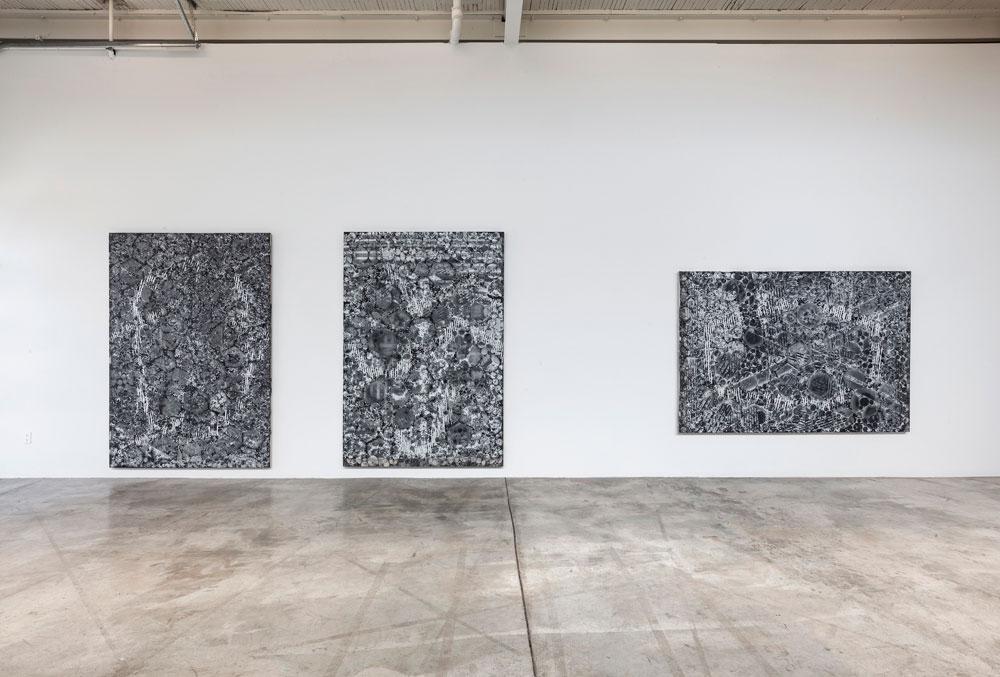John Eisler certainly knows how to keep viewers on their toes.
His current exhibition at Diaz Contemporary is quite a switch from the colourful, sculptural wall works and paintings of “Tear Here,” his 2011 show at the gallery. Gone are the glass-like shards and chains that defined many of the works in that exhibition.
Instead, “Observatory” features a series of large-scale monochromatic works that are all structurally intact. No overt tearing, sculptural layering or folding is visible.
The canvases all feature washed-out black, white and grey tones, with slight variations in orientation and geometric composition. Although no two are alike, the effect can be—especially in comparison to his earlier works and shows—a sea of grey.
However, despite the overall evenness, there are many details to savour in each of the paintings. The compositions take on the semblance of floating amoeba formations magnified under a microscope. The shapes seem to shift depending on one’s vantage point. And the paintings expand beyond the bounds of sight as the paint spills over the edges of the canvases.
There are elements of Eisler’s past styles imbued throughout—for example, in the way that the paint appears to deteriorate and decay in a style reminiscent of Warhol’s oxidation paintings. There is, in this, a sense of the accidental at work.
These artworks also evoke photographic associations, with the larger, smoky shapes evoking phenomena like incidental lens flare on a negative and the smaller, grainier forms being reminiscent of the residues in a dried-up chemical-developer tray.
Though more sombre in tone than his earlier work, Eisler’s latest outing is a move forward that gels some of the elements unique to his oeuvre.









